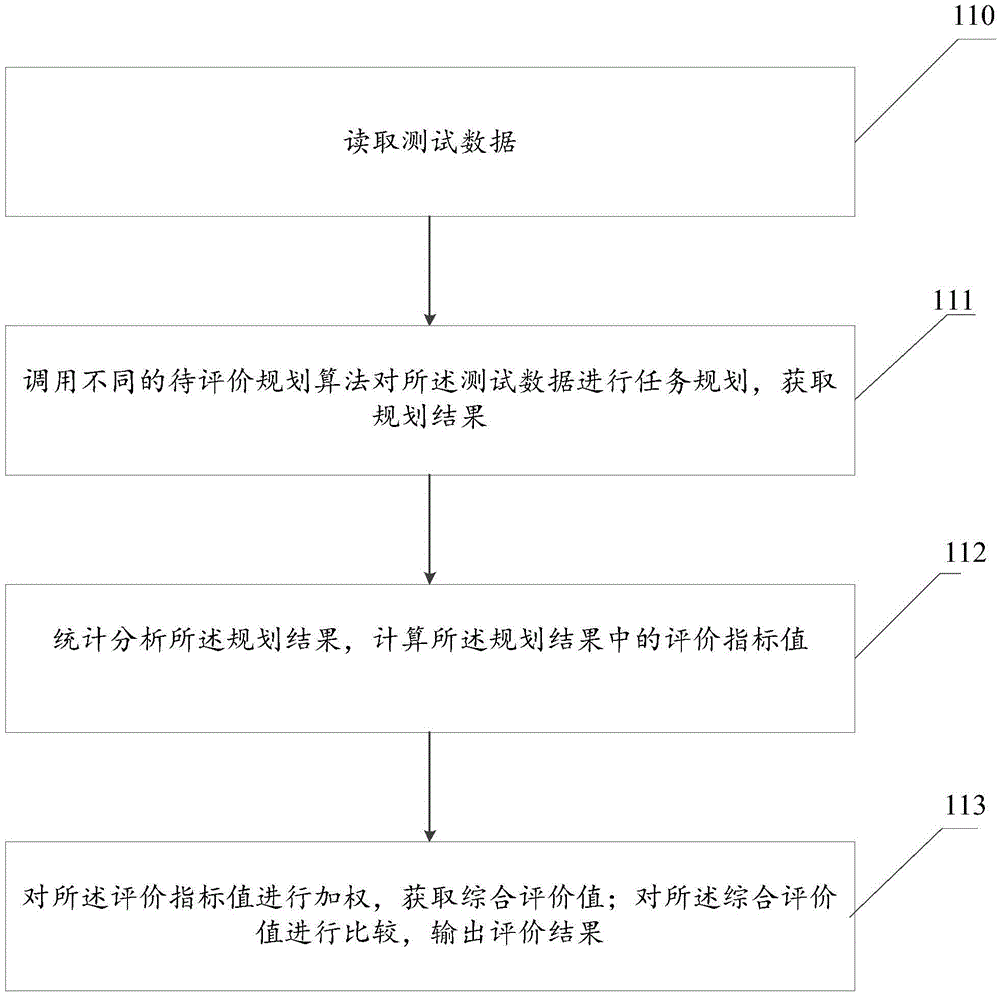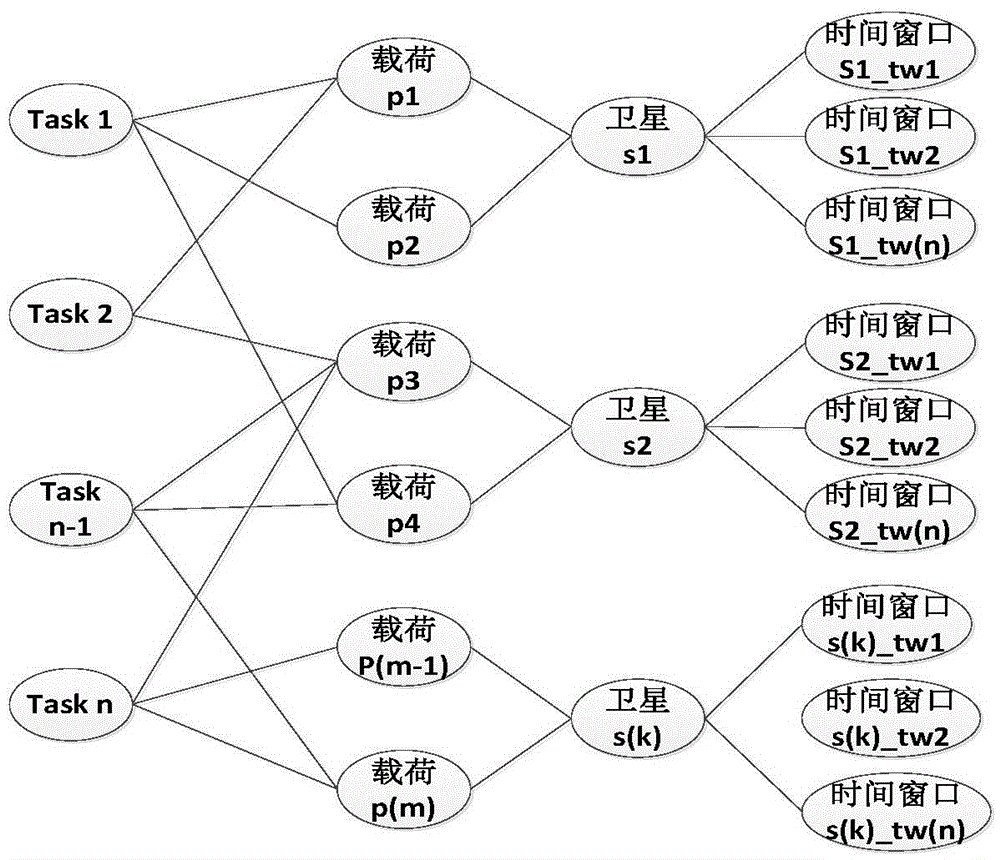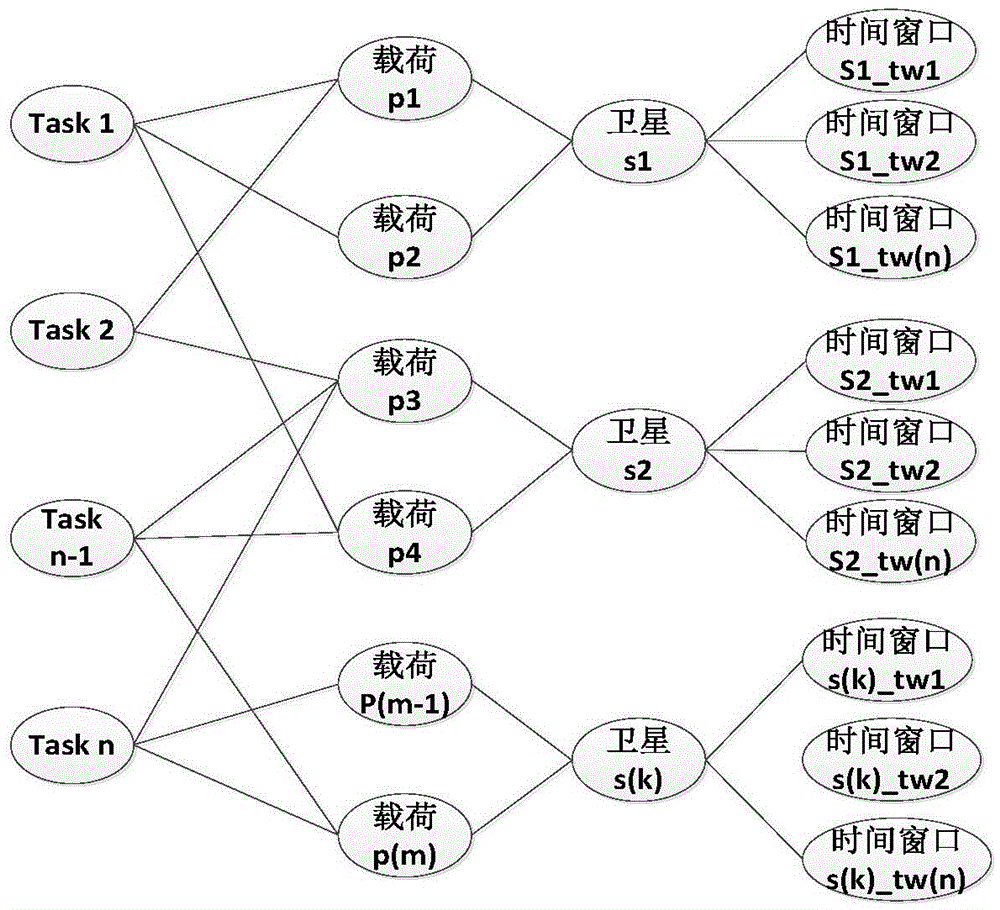Evaluation method and device of multi-satellite earth observation task planning algorithms
A technology of mission planning and earth observation, applied in computing, special data processing applications, instruments, etc., can solve problems such as the inability to select planning algorithms for satellite mission planning, and achieve practical effects
- Summary
- Abstract
- Description
- Claims
- Application Information
AI Technical Summary
Problems solved by technology
Method used
Image
Examples
Embodiment 1
[0044] This embodiment provides an evaluation method for a multi-satellite earth observation mission planning algorithm, such as figure 1 As shown, the method includes the following steps:
[0045] Step 110, read test data.
[0046] In this step, when the planning algorithm needs to be evaluated, test data is read from the database, and the test data includes observation tasks and receiving tasks. The database includes: a table of satellite information, a table of payload information, a table of ground object information, and the like. Among them, the payload refers to the equipment carried by the satellite to obtain image data, such as: camera (hyperspectral, multispectral or panchromatic), synthetic aperture radar, etc. The ground target refers to a ground area that needs to be observed, including: a point target and an area target.
[0047] Step 111, call different planning algorithms to be evaluated to perform task planning on the test data, and obtain planning results;...
Embodiment 2
[0135] Compared with Embodiment 1, this embodiment provides an evaluation device for multi-satellite earth observation mission planning algorithm, such as Figure 5 As shown, the device includes: a reading module 51, a calling module 52, a computing module 53 and a comparing module 54; wherein,
[0136] The reading module 51 is used for reading test data.
[0137] Specifically, when the planning algorithm needs to be evaluated, the reading module 5 reads test data from the database, and the test data includes observation tasks and receiving tasks. The database includes: a table of satellite information, a table of payload information, a table of ground object information, and the like. Among them, the payload refers to the equipment carried by the satellite to obtain image data, such as: camera (hyperspectral, multispectral or panchromatic), synthetic aperture radar, etc. The ground target refers to a ground area that needs to be observed, including: a point target and an ar...
Embodiment 3
[0225] In practical application, the device provided by Embodiment 2 can be integrated into a computer, and the user can evaluate the planning algorithm through the man-machine interface.
[0226] Specifically, firstly, the user can click "database configuration" in the toolbar to connect to the database. Read planning test data and start task scheduling.
[0227] After connecting to the database, the user selects the data that needs to be planned for the task from the database, clicks the "batch number selection" in the tool bar of the man-machine interface, enters the batch number and clicks the "OK" button, and then the observation meta-task and receiving meta-task data can be obtained. In addition, users can plan the data of multiple batches at the same time as needed to achieve parallel planning.
[0228] Secondly, users can set different parameters according to their needs to make the algorithm run and plan the test data. Among them, the parameters of the evolutionary ...
PUM
 Login to View More
Login to View More Abstract
Description
Claims
Application Information
 Login to View More
Login to View More - R&D
- Intellectual Property
- Life Sciences
- Materials
- Tech Scout
- Unparalleled Data Quality
- Higher Quality Content
- 60% Fewer Hallucinations
Browse by: Latest US Patents, China's latest patents, Technical Efficacy Thesaurus, Application Domain, Technology Topic, Popular Technical Reports.
© 2025 PatSnap. All rights reserved.Legal|Privacy policy|Modern Slavery Act Transparency Statement|Sitemap|About US| Contact US: help@patsnap.com



